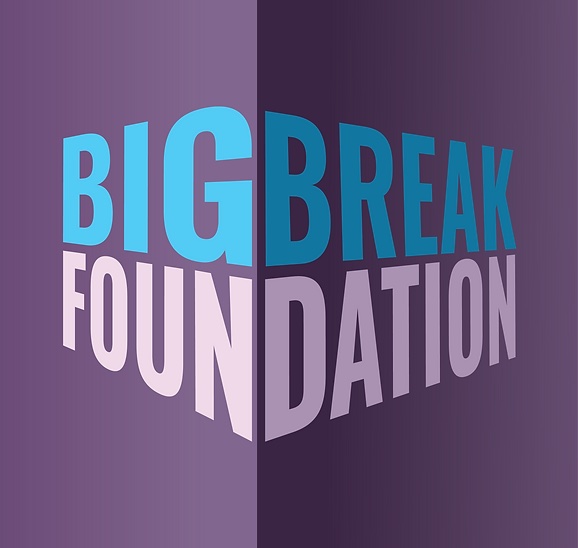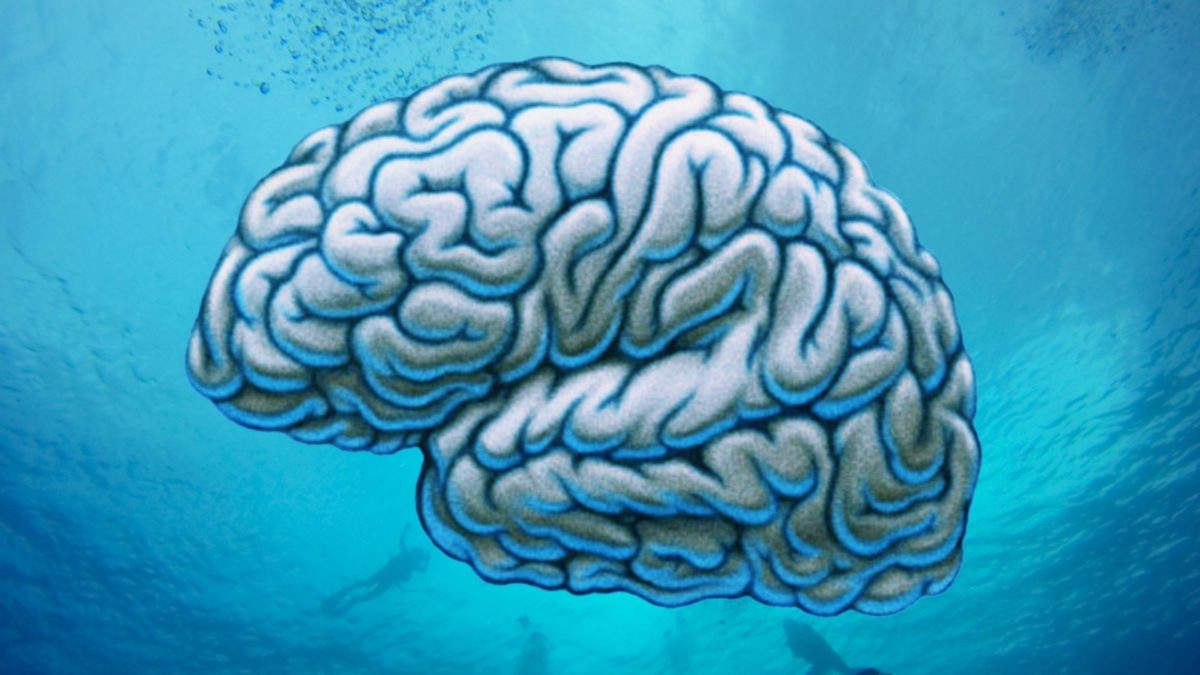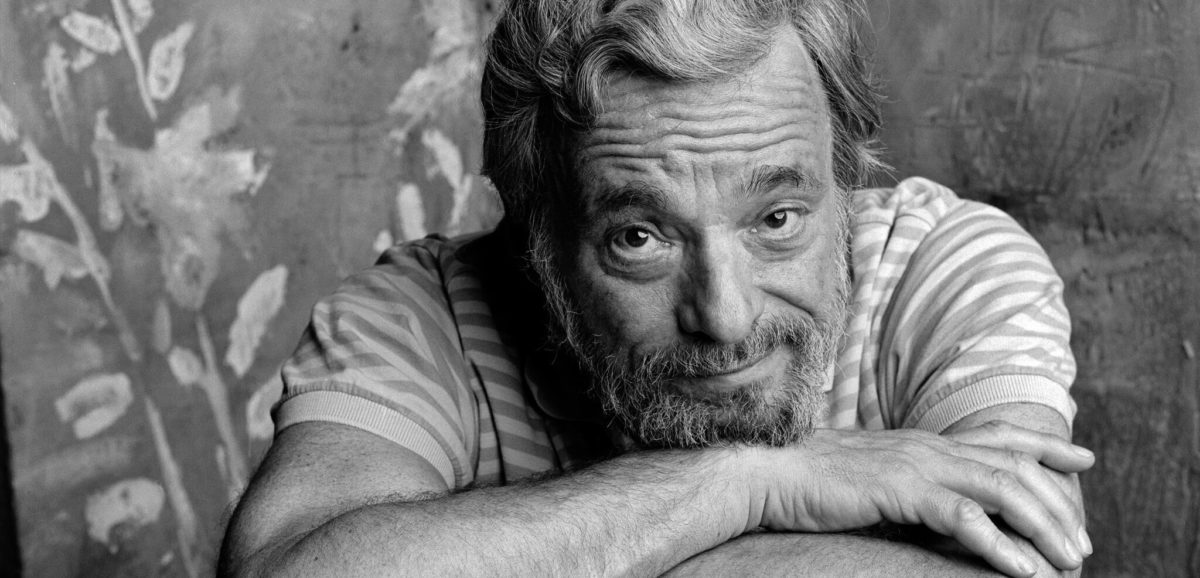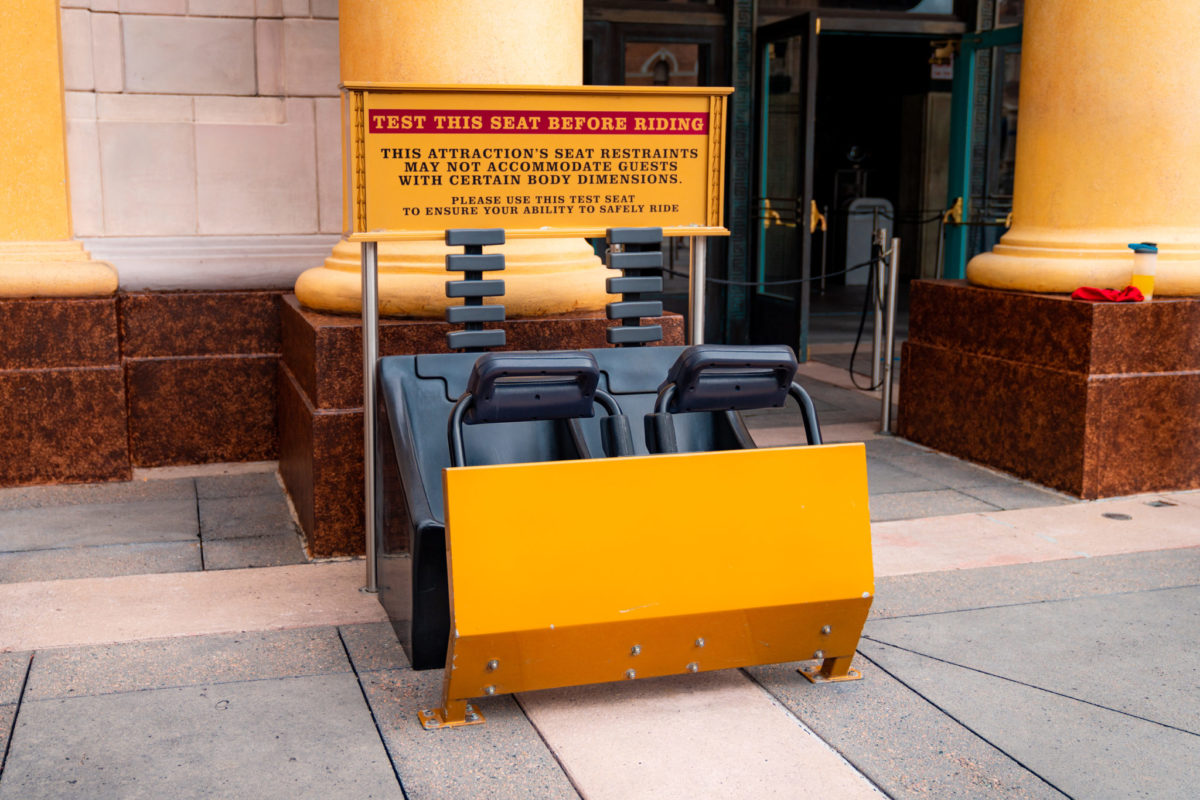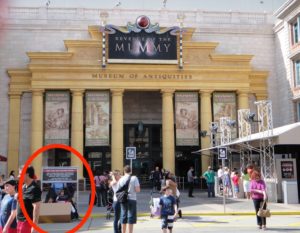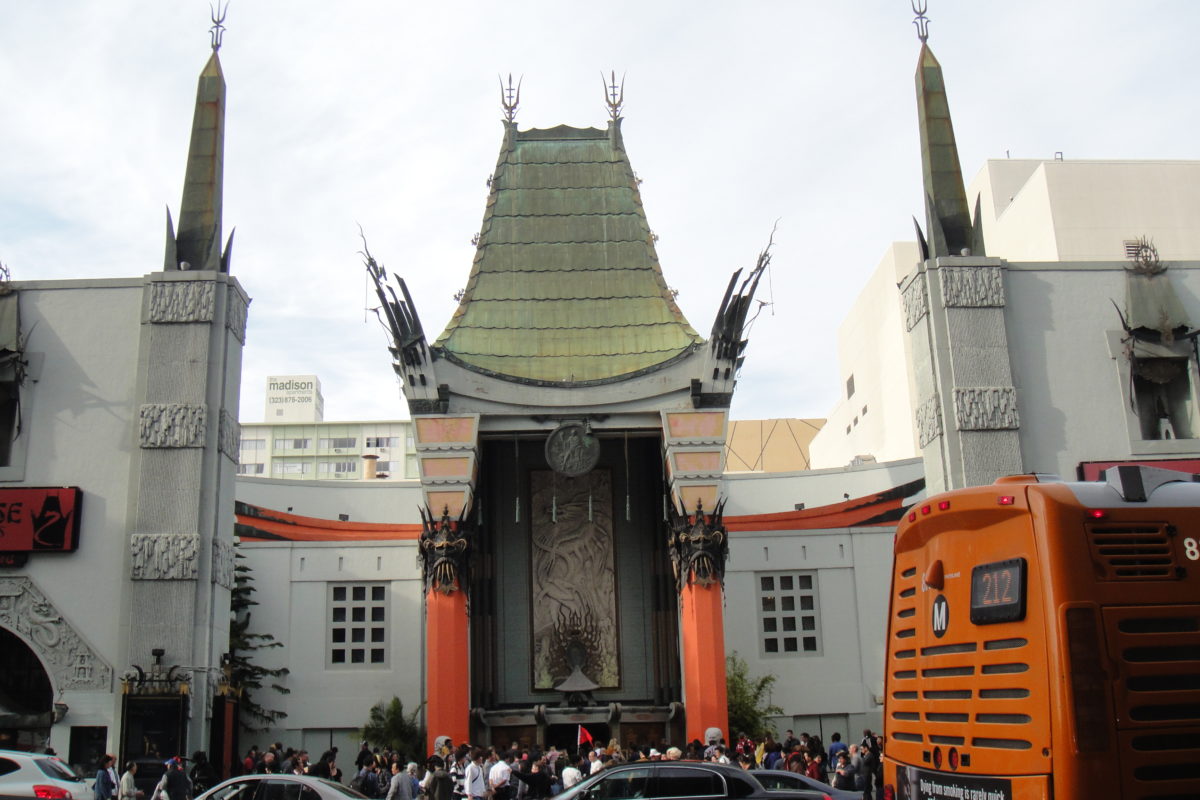Photo Credit: https://orlandoinformer.com/blog/rides-at-universal-for-larger-guests/
This essay contains mentions of weight numbers, percentiles, and size-related traumatic experiences and may be triggering to those with such experiences or eating disorders.
You’re 12. You’re excited. You’ve waited all year for the summer to come and school is finally out! You and your friends are headed down on a vacation to an exciting theme park you’ve been seeing television ads for weeks about. You’ve looked up ride videos online, gazed longingly at the park map, and you know exactly what you want to do first: that big flashy coaster right at the front of the park. It’s so tall, and, ominous. You can’t wait.
The day finally comes and you and your friends are practically spurting out steam you’re so excited. You get to the park right as it opens and zoom straight to the coaster. The line is already an hour long. Undeterred, you persevere. One hour later, feet sore, your reward is in sight: the experience you’ve dreamt about for god knows how long, the thing you’ve seen on tv for countless weeknights. The gates open and your friends eagerly scurry into the open car and you follow swiftly behind.
You reach up and pull down the overhead restraint. But there’s a problem. You can’t seem to get it to ratchet down like your friends next to you. It just springs back up. You realize why this is. Your friends are thinner than you. A jolt of anxiety floods through you and you feel a unpleasant lurching in your stomach. No matter, you probably just have to reposition yourself. You try again. No luck. The ride attendants are proceeding with the restraint checks. They’re only two rows away. Your friends are all situated: restraints locked, supplementary buckles in. Yours isn’t. Beads of sweat start forming on your forehead. Will they send the train off with you still unrestrained? Of course not…right?
The restraint checkers get to you. You look at them apologetically. You hope they aren’t mad. One rolls their eyes and walks away, the other gives you a smile and tells you it’s not a problem at all: happens all the time. He lowers the restraint onto your stomach and proceeds to throw his entire body weight onto the harness as he attempts to get it to lock. You feel like The Rock just kneed you in the kidneys. He does it again. You’ll find bruises on your stomach later that night. Your friends are staring at you, silent. He lunges again. The wind is practically knocked out of you and still, no luck. There’s now a train behind you, waiting to be unloaded. The guests at the gates are all looking at you, exasperated at the scene in front of them, impatient for their turn. You feel like a trapped insect, desperately wishing to scurry from the light, but trapped under a magnifying, glass dome.
The attendant apologizes. You’re just too big for the ride and will have to exit. Your face flushes, your eyes are bloodshot as you futilely strain to hold back the tears that are burning them. You say pleasantly “of course, ‘course, no big deal,” as if a grocery clerk just said they only have paper instead of plastic. You stand up. Your friends look up at you and give a shrug. You laugh and tell them it’s not a problem – you’ll see them at the on-ride photo station – you don’t even like roller coasters. You clumsily climb over their legs in the confined car, as you attempt to make your way to the exit. You nearly fall. You hear a few poorly disguised snickers coming from behind you. After what feels like half an hour, but was really only a few seconds, you make it to the exit platform and hastily head towards the ramp, away from the people, desperate to get away from the spotlight. As you turn the corner you hear a huge round of applause: the train has finally left the station – without you. Welcome to the loneliest place on earth.
That’s a true story. It was told to me several years ago. It’s very similar to my own. The person in question vowed to never visit a theme park again and suffered with eating disorders for the rest of their teen years and into adulthood.
The relationship theme and amusement parks have to fat people is abysmal and has been steadily getting worse over time. I’m a relatively fat person. The older a ride is, the better the chance is that I will fit on it. Modern coasters? Forget about it. Hell, apparently dark rides that move slower than their queues are off limits now too. I don’t understand how the same companies who are able to build floating mountains, stunt-tracks, and generally physics-defying achievements on a daily basis are unable to create a seat fat people can sit in.
This is a problem the industry is going to have to address sooner or later. People are getting bigger. It doesn’t show signs of stopping. The majority of women wear plus sizes. But even if that weren’t the case, there’s so many people right NOW that are being excluded. An absurd amount.
How absurd? My weight is right around the 90th percentile of Americans. I can’t fit on most roller coasters. What if we treated height like weight? The 90th percentile of men in the US (using men, because they’re taller and I’m feeling generous) is 6’. Imagine a world where anyone over 6’ tall couldn’t ride a roller coaster. Would we treat that with the same eye roll, head in the sand, “just stick a tester seat outside and call it a day” approach?
Actually, lets talk about tester seats: a wet bandaid of a solution if there ever was one. Is this supposed to be a compassionate alternative? Congratulations, you’ve moved one of the most potentially humiliating scenarios an American can experience in modern public life from the loading area, where dozens of people can witness it, to right in front of the bloody attraction marquee, where they can experience what it’s like to be a severed head on a pike. “Fat people beware.” Every attraction has a published minimum height requirement right in the park guide map, right in the description. Did we lose the measuring tape when it came to waist circumference? Did we run out of private alcoves to put tester seats in? How is this the world we live in? The rides we build dont even fit the people designing them! The twilight zone should stay inside the Tower of Terror.
And this isn’t only about emotional trauma and feelings – for those that need something more than human suffering to motivate them to pursue change – it’s a physical safety issue. The existence of fat people is ignored, forgotten, or otherwise overlooked in the design of attractions. The Punga Racers waterslide at Volcano Bay has notoriously injured over 100 people and PARALYZED James Bowen because it wasn’t designed properly to accommodate larger guests. Universal was forced to implement a 150 pound weight limit. 150 pounds. Guess what? That means its inaccessible to 63% of women, and 88% of men! Sounds like inclusion to me.
By the way, Mr. Bowen: he was 215 pounds. Even if the ride was designed to accomodate him safely, it would still exclude 30% of all men and 16% of women.
In 2013 a woman was killed on a roller coaster at Six Flags Over Texas because the restraints weren’t designed to accommodate her. The same thing happened earlier in 2004 in Massachusetts. How many people have to die, be maimed, seriously injured, or laden with a lifetime of mental illness before we invent a solution to accommodate fat people that isn’t “shove harder”?
I’m disgusted by the attitude this industry takes toward accommodations – as if they’re an annoying requirement imposed upon it, something that can be ignored or brushed off, as if the guests these decisions affect don’t really exist or aren’t that numerous. But we’re talking about, at the absolute very least, 30 million people in the US alone. And this lackadaisical attitude towards accessibility affects way more than fat people…unaccommodating restraints and vehicles are no friend to those in wheelchairs, those with mobility issues in general, amputees, etc, either.
So what can be done? Well at the very least communication around issues of accessibility needs to be drastically improved. It shouldn’t be incumbent upon the guest to miraculously know if they might have an issue, or go on the worlds worst treasure hunt to find a hidden pdf somewhere on a park website to find out all the ways they don’t fit. Put it in the map, put it in the attraction description. Treat size and other accessibility issues the same way you treat height requirements: spelled out clearly. Make it simple. Don’t be afraid to list weight numbers if there’s an ACTUAL weight requirement, but don’t use weight in place of measurements. If the restraint only accommodates someone with a 40 inch waist, just say that. Waist, hip, and chest measurements would be a good place to start. Most people already know theirs. Hell create an online size chart like clothing manufactures do.
Include chairs without armrests in restaurants and theaters. Embrace bench seats. Talk to actual fat people. Put the damn tester seat in a place where the entire land isn’t an audience!
These should be the obvious things, but harder work needs to be done in the long term. Designers and engineers and business leaders need to stop pretending that every person is the dimensions of a standardized test dummy or reference illustration. Accessibility needs to be a priority, not just for fat people, but for everyone. It shouldn’t just be shrugged off with an “oh it’s just not possible.” Really? This industry makes the impossible possible every day. It’s the entire business model: go faster, higher, more spectacular, more impossible than ever before. Embrace the freakin’ challenge.
Hell, for the completely soulless capitalists among you, imagine the increased merchandise sales you’d have if all the t-shirts came in plus size and you suddenly trippled your market of potential customers. Imagine how many more “I survived ____” t-shirts you’d sell if those people actually were able to ride “____”. Imagine the increased attendance, increased good-will, increased number of visits per guests, increased guest-spend per guest if those 30+ million Americans actually felt welcome.
For those of you feeling angry or exasperated with me, welcome to experience design. You are right now experiencing a small fraction of what it feels like to actually visit a park as a fat person. Will your restraint hold you? Remain seated please; permanecer sentados por favor.
I shouldn’t have to argue that more guests should feel welcome because its better for the bottom line. I shouldn’t feel the need to write a 2000 word essay that’ll probably get me placed on a list somewhere to argue that fat people are, surprisingly, also people that deserve the same experiences their thin counterparts get for the same priced ticket. I shouldn’t have issues fitting on rides built in the last few years when I have no problem fitting on rides built in the 1950s. I shouldn’t have to argue that emotionally traumatizing 12 year old girls for life is maybe a bad thing that we shouldn’t contribute to. And yet here we are.
This is an industry built on big dreams. Dream bigger.


